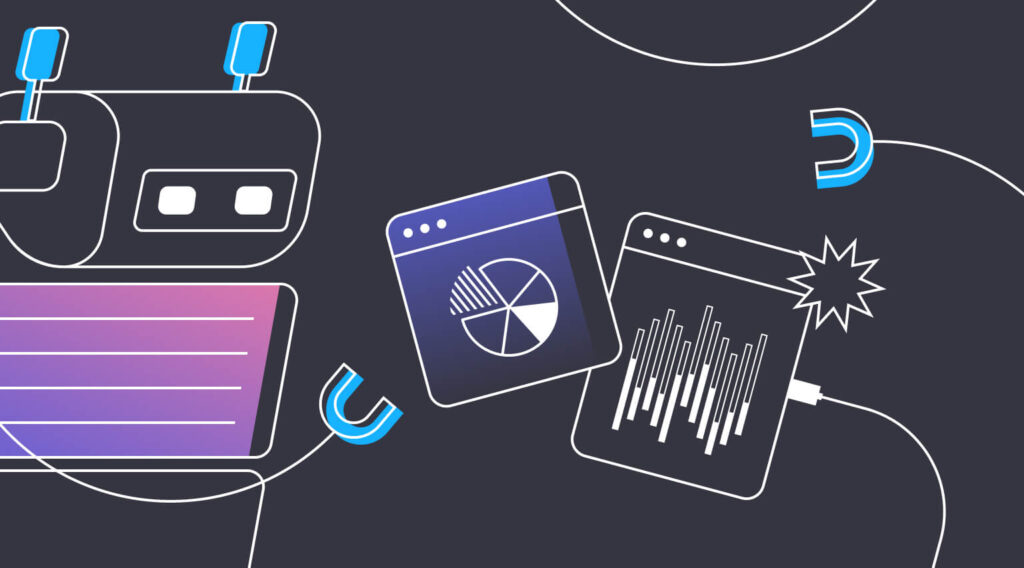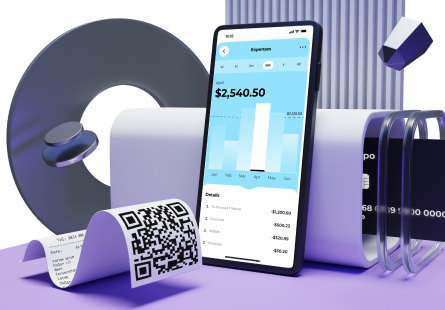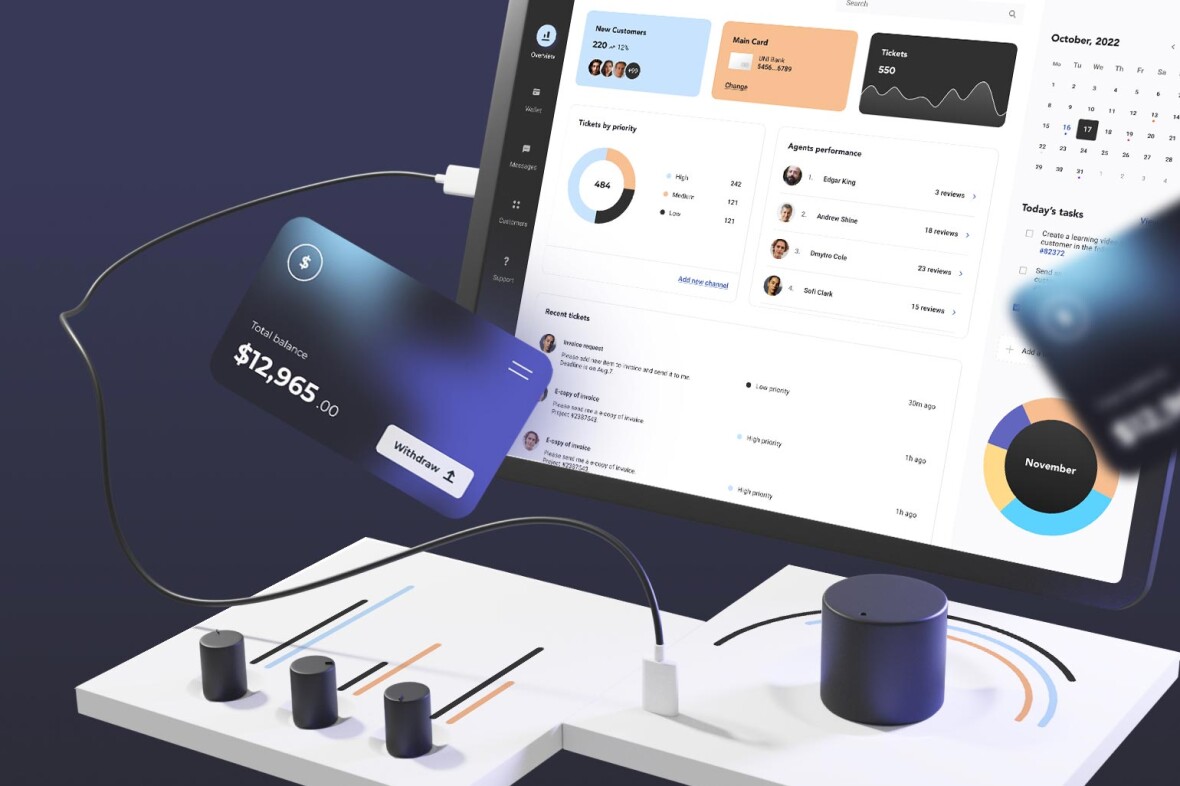It’s safe to say that innovations are the driving force behind success regardless of the industry, the finance industry being no exception. And, of course, this is the end consumer the Fintech companies are competing for and who they’re striving to provide with the top-quality, innovative services and products.
Long story short, let’s look at the latest innovations in Fintech that will be shaping the financial services industry in 2023 and beyond.
1. Embedded finance continue to grow
Embedded finance, or, simply put, financial products and services offered by non-financial companies, is nothing new today. Many of us have experience using embedded finance, for instance, as private-label credit cards at supermarkets and airlines. Still, the next generation of embedded finance is likely to go far beyond that, tightly integrating with the digital interfaces we use on a daily basis.
Embedded finance is steadily penetrating a wide range of financial products and services, from shopping-cart platforms to investment apps, making them a taken-for-granted extension of our non-financial experiences.
For instance, you can choose to buy an item in multiple installments at checkout on a website or add insurance when purchasing a car or electronic device. This way, embedded finance can go a long way toward boosting conversions, collecting more valuable data, and growing the competitiveness of products.
Still, embedded payments that allow for instant online purchases or embedded insurance that lets you get insurance in a single click together with your plane ticket aren’t a novelty but rather a growing area of Fintech. The well-known BNPL (buy now, pay later) is also an example of embedded finance.
2. Web3 & DeFi provide users with a completely new customer experience
Web3 and DeFi are more than just an innovation in Fintech — they are the revolution that is disrupting the financial industry. Due to its blockchain nature, Web3 offers a transparent, open, secure, and decentralized way of using the Internet and financial applications.
Open and transparent financial transactions and interactions, such as digital identity verification, credit scoring, and fraud detection, are giving control back to the consumer. In addition, the ability to exchange virtual money over borders and without any intermediaries is a promising start for a healthy digital economy.
While Web3 refers to a broader technological concept, DeFi (decentralized finance) is a blockchain-based method of making financial transactions. DeFi is viewed as a cutting-edge financial technology that challenges the traditional banking industry. This technological innovation eliminates the fees financial institutions charge for using their services and promotes peer-to-peer transactions.

3. Cryptocurrencies & NFTs are getting impressive traction
Today, the ownership of digital goods is one of the growing financial trends, which became possible thanks to non-fungible tokens (NFTs) and cryptocurrencies. Blockchain technology supports the crypto ecosystem by ensuring ultimate security and providing a robust financial infrastructure. While cryptocurrencies act as a means of payment, NFTs are proof of ownership of specific digital assets.
The 21st-century kids — cryptocurrencies and NFT — are getting impressive traction, driving Fintech startups to create new coins or develop NFT marketplaces, and helping consumers earn their living by trading crypto assets and digital tokens. And not only that — for example, you can monetize your non-fungible tokens without selling them by granting NFT-backed loans.
4. Metaverse unfolds a new digital universe
Although Metaverse is closely associated with gaming and entertainment in our minds, it is another innovation in financial services that is going to dramatically change the way we deal with our finances. The primary reason brands are adopting Metaverse is growing customer engagement, and the so-much-customer-focused Fintech companies are no exception.
Metaverse offers virtual spaces in AR and VR, which can be effectively paired with Fintech digital-only services to provide immersive experiences, for instance, a realistic virtual visit to a bank instead of traveling to a physical branch. In addition, Metaverse can bring our usual banking apps to a new level by enabling users to check balances and make transfers in an immersive environment and through advanced data visualization.
5. IoT & Wearables take financial services to the next level
One of the accelerating Fintech trends, IoT (Internet of Things), refers to the network of connected physical objects equipped with sensors for exchanging data over the Internet. The number of internet-connected devices is steadily growing, unlocking new opportunities for financial institutions.
While IoT effectively improves various aspects of our daily lives, for financial services companies, it translates into enhanced customer service, more effective risk management, and greater security.
No-touch payments have been popular for years after the advent of NFC technology. Tapping your mobile against a payment terminal is not only very convenient — it also helped minimize contact during the COVID-19 pandemic.
Increased use of NFC and Host Card Emulation (HCE) significantly stimulates the growth of the wearable payments market. HCE lets wearables imitate a payment card on NFC-enabled devices without requiring access to an authentication function. Not to mention, payment wearables aren’t limited to smartwatches today — you can also use smart NFC rings to easily make payments. It’s safe to assume that innovative hardware like this is getting extremely attractive to modern consumers.
Over the past several years, the implementation of IoT by Fintech institutions has gone beyond contactless payments, and the industry doesn’t seem to cease leveraging this technology in the years to come. For example, wireless self-checkouts like Amazon Go allow customers to avoid lining up at the cashier by simply getting their cards scanned by IoT devices at the exit.
Another excellent example of IoT disrupting the Fintech industry is Wallet of Things — a fast and secure mobile wallet for managing crypto assets. It creates expense patterns and delivers data that helps users manage their budgets more effectively. Or, let’s take IoT security systems, one of the most common cases of implementing IoT in Fintech that enable high-grade identity maintenance and access control.
6. RPA replaces manual work
Robotic Process Automation helps financial technology firms accelerate their processes by automating repetitive manual tasks, resulting in greater work efficiency and less investment. One of the brightest examples of using RPA technology in Fintech is improved customer service — banks and other financial institutions can set up 24/7 chatbots to interact with customers who need help with issues or financial advice.
Also, RPA solutions can go a long way toward enhancing overall business productivity. Fair enough, since humans can’t match the speed of RPA in most routine tasks, such as handling basic insurance claims. In addition, AI-powered RPA solutions eliminate human error, which translates into smoother and more efficient processes.
7. AI makes financial operations smarter
Fintech solutions involve massive amounts of data, and there doesn’t exist any technology that can handle all that data better than artificial intelligence, or, to be more specific, machine learning. AI comes in handy across multiple areas of Fintech, including risk management, fraud prevention, optimizing operating costs, personalizing banking experiences, and automating workflows.
Thanks to AI, banks and other financial institutions now have the power to make the most of their customer data, revolutionizing the traditional ways of making online transactions, savings, loan management, and other consumer services. The ability of AI to spot patterns across complex financial systems will definitely have far-reaching implications — it benefits consumers and financial entities by allowing the latter to significantly reduce costs while increasing productivity.
According to McKinsey, AI can generate up to $1 trillion in added value for the global banking industry per year. Innovative banks and other financial institutions are increasingly adopting an AI-first mindset to win an edge over expanding technology firms.

8. Biometric technologies adoption accelerates
Biometrics offers precise recognition of individuals based on their unique physical features, which makes this technology a perfect solution for safeguarding sensitive financial operations. Biometric solutions allow Fintech players to effectively tackle challenges associated with the anonymity of the Internet and provide intuitive and user-friendly experiences for their customers and staff.
Biometric payment cards are getting more and more common across the globe. A biometric card effectively combines chip technology with its owner’s fingerprints to safely verify the cardholder’s identity for convenient in-store purchases. This is possible thanks to an embedded sensor powered by the chip, which authenticates the identity via a fingerprint and can be used at any EMV terminal regardless of the location.
While biometric payment cards look like the next big shift in payments technology for in-store shopping, a new technology called naked payments is already here. Naked payments refer to an emerging approach to in-person transactions that allows the consumer to pay with only a biometric scan. The consumer’s biometrics are linked to a payment account, removing the need to provide a card, a phone, or any other physical object to carry out a transaction.
9. Regtech takes regulatory compliance management to the next level
Finance belongs to one of the most heavily regulated sectors, making the use of any innovation in finance subject to related laws and regulations. It’s vital for Fintech startups and established businesses to stay compliant with all these regulations. Here’s where Regtech (Regulatory Technology) comes to save the day.
Most Regtech solutions are services or tools that apply Big Data and cloud computing to facilitate a company’s ability to monitor, report and comply with regulatory requirements. These tools use artificial intelligence to streamline compliance tasks and minimize fraud risks. Given that, Regtechs are here to stay to ensure transparency and compliance.
Since financial services are subject to increased regulation and oversight, Regtech solutions are commonly used by Fintechs such as neobanks and crypto exchanges. They go hand in hand, with Fintech solutions taking financial service capabilities to the next level and Regtech helping ensure these tools fully comply with regulatory requirements.
From their first days, Fintech and Regtech have been used in tandem, and apparently, it will be the case for the decades to come.
10. Banks are being forced to reinvent themselves
Without any doubt, banks running the old playbook will have scarce chances to survive in the digitized world. The winners will operate similarly to tech companies, with next-gen data capabilities, a state-of-the-art tech stack, and an agile operating model.
Neobanking
The meaning of digital banking has been broadened beyond just going cashless. The financial industry has shifted to the next stage of evolution — the advent of entirely virtual banks, or Neobanks.
A Neobank is a digital-first financial institution that delivers a range of banking services, from checking your account balance to arranging loans, but doesn’t have a physical branch. The primary goal of Neobanks is to simplify banking processes by providing financial services in a customer-focused, digital-only manner. Neobanks are likely to become a crucial part of the financial ecosystem in the near future due to their convenience of use and lower fees.
Open Banking
Open Banking, which has been around for almost ten years, will keep shaping the future of Fintech for the years to come. This is a practice of giving third-party financial service providers open access to data from banks through the use of APIs. Although Open Banking is not a technology, it’s a driving factor of financial innovation.
The opportunities of Open Banking are virtually unlimited, but the main goal remains the same: provide the end consumer with a better service. As technology advances, Open Banking will create new, enhanced financial experiences, making financial services more comprehensive and valuable to every user.
Cloud banking
While the world is massively moving to the cloud, there’s no wonder that cloud technologies are conquering the Fintech ecosystem. Cloud banking enables banks to transfer their infrastructure to a cloud environment, cutting down on IT hardware and maintenance costs. In addition, it means greater flexibility, faster deployment, and the ability to easily store large amounts of data.
Both financial institutions and end consumers can equally benefit from cloud banking. For the former, it opens up ample opportunities for enhanced data management and cost-effective operations while giving the latter access to efficient and secure self-service applications, such as PayPal.
Final thoughts
Fintech is undergoing fundamental changes today, quickly adapting to cutting-edge technology advancements. The digital transformation that financial services are experiencing is anchored in improving customer experience, meaning that financial institutions and other Fintech market players are sure to develop new, enhanced services in the near future.
The top Fintech innovations to watch in 2023 have a key common feature: they’re all here to make the lives of consumers and businesses easier. And although adopting these technologies can be associated with some pains, these are certain to pay off in the long run.







